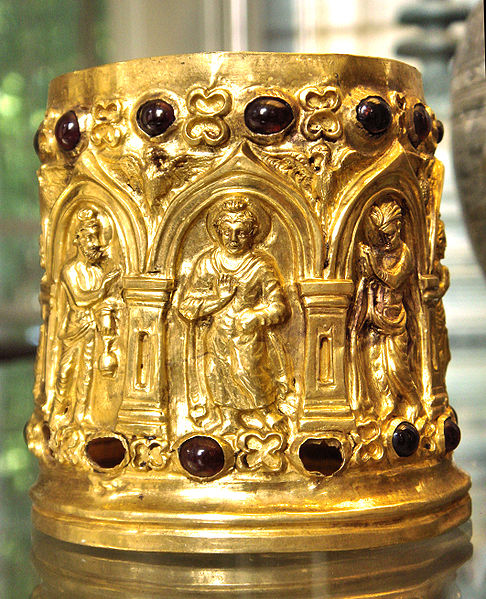The Greco-Buddhist art or Gandhara art is the artistic manifestation of Greco-Buddhism, a cultural syncretism between Ancient Greek art and Buddhism. It had mainly evolved in the ancient region of Gandhara, located in the northwestern fringe of the Indian subcontinent.
Image: Gandhara Buddha (tnm)
Image: Bimaran Casket 2
Image: Kushan Maitreya
Silver coin depicting the Greco-Bactrian king Demetrius I (200–180 BC) wearing an elephant scalp, symbol of his conquest of India. Back: Herakles, holding a lion skin and a club resting over the arm. The text reads: ΒΑΣΙΛΕΩΣ ΔΗΜΗΤΡΙΟΥ – BASILÉŌS DĒMĒTRÍOU "of King Demetrius".
Greco-Buddhism or Graeco-Buddhism denotes a supposed cultural syncretism between Hellenistic culture and Buddhism developed between the 4th century BC and the 5th century AD in Gandhara, in present-day Pakistan and parts of north-east Afghanistan. While the Greco-Buddhist art shows clear Hellenistic influences, the majority of scholars do not assume a noticeable Greek influence on Gandharan Buddhism beyond the artistic realm.
Gautama Buddha in Greco-Buddhist style, 1st–2nd century AD, Gandhara (Peshawar basin, modern day Pakistan).
"Victory coin" of Alexander the Great, minted in Babylon 322 BC, following his campaigns in ancient India. Obverse: Alexander being crowned by Nike. Reverse: Alexander attacking King Porus on his elephant. Silver. British Museum.
The Hellenistic Pataliputra capital, discovered in Pataliputra, capital of the Maurya Empire, dated to the 3rd century BC.
The Greco-Bactrian city of Ai-Khanoum (c. 300–145 BC) was located at the doorstep of ancient India.







